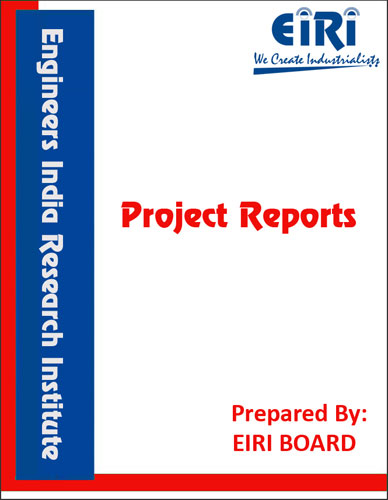POTATO POWDER PLANT
The project report includes Present Market Position and Expected Future Demand, Market Size, Statistics, Trends, SWOT Analysis and Forecasts. Report provides a comprehensive analysis from industry covering detailed reporting and evaluates the position of the industry by providing insights to the SWOT analysis of the industry.
We can prepare PROJECT REPORT as per your INVESTMENT PLAN for BANK LOAN REQUIREMENT and INDUSTRY ANALYSIS. All reports are prepared by highly qualified consultants and verified by a panel of experts.
Have Query? Click Here to Chat
Industry Expert is Online, Chat with him for more detail.

The potato is a starchy, tuberous crop from the perennial Solanum tuberosum of the Solanaceae family (also known as the nightshades). The word potato may refer to the plant itself as well as the edible tuber. In the region of the Andes, there are some other closely related cultivated potato species. Potatoes were first introduced outside the Andes region four centuries ago, and have become an integral part of much of the world’s cuisine. It is the world’s fourth-largest food crop, following rice, wheat, and maize. Long-term storage of potatoes requires specialized care in cold warehouses.
Wild potato species occur throughout the Americas, from the United States to Uruguay. The potato was originally believed to have been domesticated independently in multiple locations, but later genetic testing of the wide variety of cultivars and wild species proved a single origin for potatoes in the area of present-day southern Peru (from a species in the Solanum brevicaule complex), where they were domesticated 7,000–10,000 years ago. Following centuries of selective breeding, there are now over a thousand different types of potatoes. Of these subspecies, a variety that at one point grew in the Chiloé Archipelago (the potato’s south-central Chilean sub-center of origin) left its germplasm on over 99% of the cultivated potatoes worldwide.
Following the Spanish conquest of the Inca Empire, the Spanish introduced the potato to Europe in the second half of the 16th century. The staple was subsequently conveyed by European mariners to territories and ports throughout the world. The potato was slow to be adopted by distrustful European farmers, but soon enough it became an important food staple and field crop that played a major role in the European 19th century population boom. However, lack of genetic diversity, due to the very limited number of varieties initially introduced, left the crop vulnerable to disease. In 1845, a plant disease known as late blight, caused by the fungus-like oomycete Phytophthora infestans, spread rapidly through the poorer communities of western Ireland, resulting in the crop failures that led to the Great Irish Famine. Thousands of varieties still persist in the Andes however, where over 100 cultivars might be found in a single valley, and a dozen or more might be maintained by a single agricultural household. Besides the need of ensuring proper genetic diversity of a crop, it also underscores the need of depending on several staple crops, and to preferably choose staple crops that are endemic and thus adapted to the local environment.
The annual diet of an average global citizen in the first decade of the 21st century included about 33 kg (73 lb) of potato. However, the local importance of potato is extremely variable and rapidly changing. It remains an essential crop in Europe (especially eastern and central Europe), where per capita production is still the highest in the world, but the most rapid expansion over the past few decades has occurred in southern and eastern Asia. China is now the world’s largest potato-producing country, and nearly a third of the world’s potatoes are harvested in China and India.
Etymology
The English word potato comes from Spanish patata (the name used in Spain). The Spanish Royal Academy says the Spanish word is a compound of the Taino batata (sweet potato) and the Quechua papa (potato). The name potato originally referred to a type of sweet potato rather than the other way around, although there is actually no close relationship between the two plants. The English confused the two plants one for the other. In many of the chronicles detailing agriculture and plants, no distinction is made between the two. The 16th-century English herbalist John Gerard used the terms “bastard potatoes” and “Virginia potatoes” for this species, and referred to sweet potatoes as “common potatoes”. Potatoes are occasionally referred to as “Irish potatoes” or “white potatoes” in the United States, to distinguish them from sweet potatoes
INTRODUCTION
PROPERTIES
USES AND APPLICATIONS
MARKET SURVEY
OVERVIEW OF POTATO IN INDIA
PRESENT MANUFACTURERS OF POTATO POWDER
MANUFACTURING PROCESS OF POTATO POWDER
PULPING AND DRYING TO GET FLAKES
PRE COOKING & GRINDING OF FLAKES INTO POTATOES POWDER
PROCESS FLOW DIAGRAM
MANUFACTURING PROCESS OF POTATO POWDER (CFTRI PROCESS)
PROCESS FLOW DIAGRAM
PRODUCTION OF POTATO POWDER/GRANULES
PRODUCTION OF MESHED POTATO POWDER
MODIFIED POTATO FLAKES OR MODIFIED POTATO GRANULES
PLANT LAYOUT
MANUFACTURERS/SUPPLIERS OF POTATO POWDER/GRANULES
SUPPLIERS OF PLANT AND MACHINERIES
APPENDIX – A :
1. COST OF PLANT ECONOMICS
2. LAND & BUILDING
3. PLANT AND MACHINERY
4. FIXED CAPITAL INVESTMENT
5. RAW MATERIAL
6. SALARY AND WAGES
7. UTILITIES AND OVERHEADS
8. TOTAL WORKING CAPITAL
9. COST OF PRODUCTION
10. PROFITABILITY ANALYSIS
11. BREAK EVEN POINT
12. RESOURCES OF FINANCE
13. INTEREST CHART
14. DEPRECIATION CHART
15. CASH FLOW STATEMENT
16. PROJECTED BALANCE SHEET



